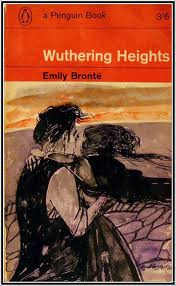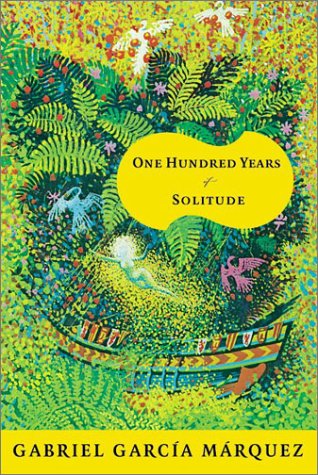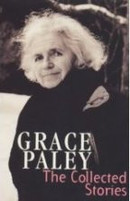Author Photo And Bio
 1. Wuthering Heights by Emily Brontë (1847). The author’s only novel, published a year before her death, centers on the doomed love between Heathcliff, a tormented orphan, and Catherine Earnshaw, his benefactor’s vain and willful daughter. Passion brings them together, but class differences, and the bitterness it inspires, keeps them apart and continues to take its toll on the next generation. Wuthering Heights tells you why they say that love hurts.
1. Wuthering Heights by Emily Brontë (1847). The author’s only novel, published a year before her death, centers on the doomed love between Heathcliff, a tormented orphan, and Catherine Earnshaw, his benefactor’s vain and willful daughter. Passion brings them together, but class differences, and the bitterness it inspires, keeps them apart and continues to take its toll on the next generation. Wuthering Heights tells you why they say that love hurts.
 2. Great Expectations by Charles Dickens (1860–61). Dickens gives a twist to an ancient storyline —of the child of royal birth raised in humble surroundings. Looking back on his life, Pip describes his poor youth near marshes in rural England —his chance encounter with a murderous convict, his experiences with the strange Miss Havisham, who always wears a wedding dress, and his love for her beautiful adopted daughter Estella. As he approaches adulthood, Pip learns that he has a secret benefactor who arranges opportunities for him in London, wherein lies the tale, and the twist.
2. Great Expectations by Charles Dickens (1860–61). Dickens gives a twist to an ancient storyline —of the child of royal birth raised in humble surroundings. Looking back on his life, Pip describes his poor youth near marshes in rural England —his chance encounter with a murderous convict, his experiences with the strange Miss Havisham, who always wears a wedding dress, and his love for her beautiful adopted daughter Estella. As he approaches adulthood, Pip learns that he has a secret benefactor who arranges opportunities for him in London, wherein lies the tale, and the twist.
 3. The Catcher in the Rye by J. D. Salinger (1951). After being dismissed from another prep school, Holden Caulfield —whose slangy, intimate narration defines this novel —has a series of misadventures in Manhattan before going home for Christmas. Haunted by the death of brother Allie, he wants what he cannot have —to snare the elusive Jane Gallagher, to run away with his sister Phoebe, to “catch” innocent youths before they fall into the “phony” world of adults. A timeless voice of adolescent rage and assurance, Holden may rank highest in the pantheon of antiestablishment heroes.
3. The Catcher in the Rye by J. D. Salinger (1951). After being dismissed from another prep school, Holden Caulfield —whose slangy, intimate narration defines this novel —has a series of misadventures in Manhattan before going home for Christmas. Haunted by the death of brother Allie, he wants what he cannot have —to snare the elusive Jane Gallagher, to run away with his sister Phoebe, to “catch” innocent youths before they fall into the “phony” world of adults. A timeless voice of adolescent rage and assurance, Holden may rank highest in the pantheon of antiestablishment heroes.
 4. Pride and Prejudice by Jane Austen (1813). “It is a truth universally acknowledged, that a single man in possession of a good fortune must be in want of a wife,” reads this novel’s famous opening line. This matching of wife to single man —or good fortune —makes up the plot of perhaps the happiest, smartest romance ever written. Austen’s genius was to make Elizabeth Bennet a reluctant, sometimes crabby equal to her Mr. Darcy, making Pride and Prejudice as much a battle of wits as it is a love story.
4. Pride and Prejudice by Jane Austen (1813). “It is a truth universally acknowledged, that a single man in possession of a good fortune must be in want of a wife,” reads this novel’s famous opening line. This matching of wife to single man —or good fortune —makes up the plot of perhaps the happiest, smartest romance ever written. Austen’s genius was to make Elizabeth Bennet a reluctant, sometimes crabby equal to her Mr. Darcy, making Pride and Prejudice as much a battle of wits as it is a love story.
 5. Beloved by Toni Morrison (1987). It’s a choice no mother should have to make. In 1856, escaped slave Margaret Garner decided to kill her infant daughter rather than return her to slavery. Her desperate act created a national sensation. Where Garner’s true-life drama ends, Beloved begins. In this Pulitzer Prize–winning novel, the murdered child, Beloved, returns from the grave years later to haunt her mother Sethe. Aided by her daughter Denver and lover Paul D, Sethe confronts the all-consuming guilt precipitated by the ghostly embodiment of her dead child. Rendered in poetic language, Beloved is a stunning indictment of slavery “full of baby’s venom.”
5. Beloved by Toni Morrison (1987). It’s a choice no mother should have to make. In 1856, escaped slave Margaret Garner decided to kill her infant daughter rather than return her to slavery. Her desperate act created a national sensation. Where Garner’s true-life drama ends, Beloved begins. In this Pulitzer Prize–winning novel, the murdered child, Beloved, returns from the grave years later to haunt her mother Sethe. Aided by her daughter Denver and lover Paul D, Sethe confronts the all-consuming guilt precipitated by the ghostly embodiment of her dead child. Rendered in poetic language, Beloved is a stunning indictment of slavery “full of baby’s venom.”
 6. The Sound and the Fury by William Faulkner (1929). A modernist classic of Old South decay, this novel circles the travails of the Compson family from four different narrative perspectives. All are haunted by the figure of Caddy, the only daughter, whom Faulkner described as “a beautiful and tragic little girl.” Surrounding the trials of the family itself are the usual Faulkner suspects: alcoholism, suicide, racism, religion, money, and violence both seen and unseen. In the experimental style of the book, Quentin Compson summarizes the confused honor and tragedy that Faulkner relentlessly evokes: “theres a curse on us its not our fault is it our fault.”
6. The Sound and the Fury by William Faulkner (1929). A modernist classic of Old South decay, this novel circles the travails of the Compson family from four different narrative perspectives. All are haunted by the figure of Caddy, the only daughter, whom Faulkner described as “a beautiful and tragic little girl.” Surrounding the trials of the family itself are the usual Faulkner suspects: alcoholism, suicide, racism, religion, money, and violence both seen and unseen. In the experimental style of the book, Quentin Compson summarizes the confused honor and tragedy that Faulkner relentlessly evokes: “theres a curse on us its not our fault is it our fault.”
 7. One Hundred Years of Solitude by Gabriel García Márquez (1967). Widely considered the most popular work in Spanish since Don Quixote, this novel —part fantasy, part social history of Colombia — sparked fiction’s “Latin boom” and the popularization of magic realism. Over a century that seems to move backward and forward simultaneously, the forgotten and offhandedly magical village of Macondo — home to a Faulknerian plethora of incest, floods, massacres, civil wars, dreamers, prudes, and prostitutes — loses its Edenic innocence as it is increasingly exposed to civilization.
7. One Hundred Years of Solitude by Gabriel García Márquez (1967). Widely considered the most popular work in Spanish since Don Quixote, this novel —part fantasy, part social history of Colombia — sparked fiction’s “Latin boom” and the popularization of magic realism. Over a century that seems to move backward and forward simultaneously, the forgotten and offhandedly magical village of Macondo — home to a Faulknerian plethora of incest, floods, massacres, civil wars, dreamers, prudes, and prostitutes — loses its Edenic innocence as it is increasingly exposed to civilization.
 8. Stories of Grace Paley (1922– ). Paley’s political beliefs inform her stories, but she never writes cant. Her Greenwich Village surroundings infuse her work, making New York City seem like a small town. Her stories of what she calls “everyday life, kitchen life”—of frustrated wives, knife-wielding children, and cold men —are written in the freshest, loosest, most modern language imaginable.
8. Stories of Grace Paley (1922– ). Paley’s political beliefs inform her stories, but she never writes cant. Her Greenwich Village surroundings infuse her work, making New York City seem like a small town. Her stories of what she calls “everyday life, kitchen life”—of frustrated wives, knife-wielding children, and cold men —are written in the freshest, loosest, most modern language imaginable.
 9. Fahrenheit 451 by Ray Bradbury (1953). Books are dangerous. They fill heads with ideas, make people think, question, causing harmful confusion. This is the ideology that informs Bradbury’s dystopia, whose citizens have traded independence for safe conformity, curiosity for the pleasures of wall-sized tele visions. Fireman Guy Montag, who doesn’t douse blazes but burns books, seems happy until his wife attempts suicide and he seeks answers that make him an enemy of this brave new world.
9. Fahrenheit 451 by Ray Bradbury (1953). Books are dangerous. They fill heads with ideas, make people think, question, causing harmful confusion. This is the ideology that informs Bradbury’s dystopia, whose citizens have traded independence for safe conformity, curiosity for the pleasures of wall-sized tele visions. Fireman Guy Montag, who doesn’t douse blazes but burns books, seems happy until his wife attempts suicide and he seeks answers that make him an enemy of this brave new world.
 10. Grimm’s Fairy Tales (1812–14). Where Hans Christian Anderson was sweetly folklorish and gentle, the German folk tales collected by Jakob and Wilhelm Grimm are gritty and fearless. Their legendary stories —among them Hansel and Gretel, Snow White, and Sleeping Beauty —are as violent as they are enchanting. Though versions of the Frog Prince abound, the Grimms reject sentimental romance to tell a moral tale about keeping a promise. Their princess is a brat who throws the frog against the wall rather than kissing him to turn.
10. Grimm’s Fairy Tales (1812–14). Where Hans Christian Anderson was sweetly folklorish and gentle, the German folk tales collected by Jakob and Wilhelm Grimm are gritty and fearless. Their legendary stories —among them Hansel and Gretel, Snow White, and Sleeping Beauty —are as violent as they are enchanting. Though versions of the Frog Prince abound, the Grimms reject sentimental romance to tell a moral tale about keeping a promise. Their princess is a brat who throws the frog against the wall rather than kissing him to turn.